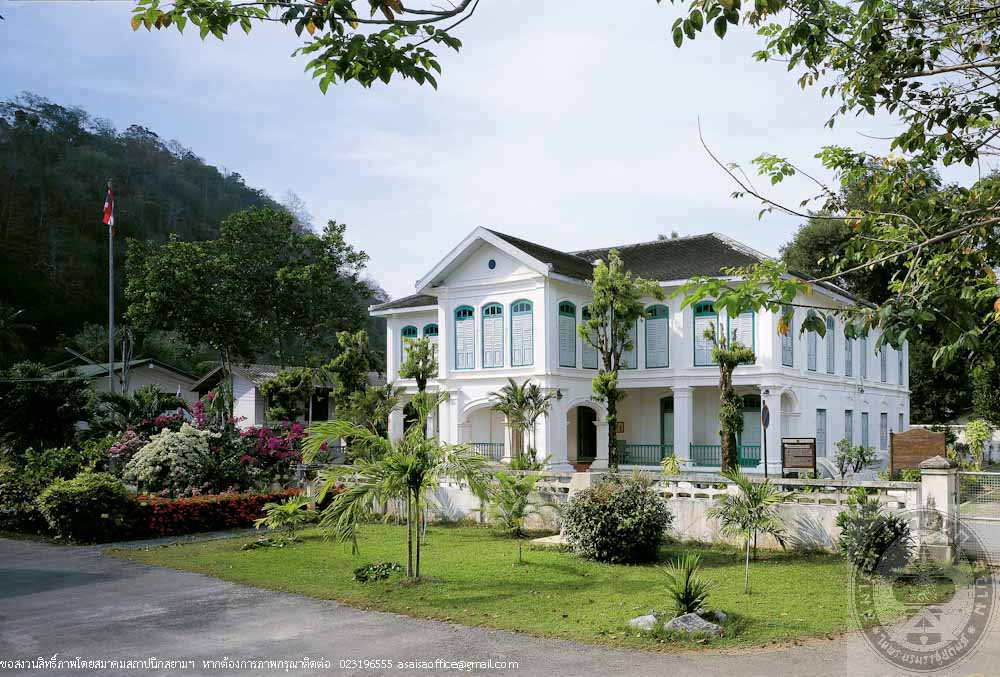พิพิธภัณฑสถานแห่งชาติ สตูล (คฤหาสน์กูเด็น)
พิพิธภัณฑสถานแห่งชาติ สตูล (คฤหาสน์กูเด็น)
ที่ตั้ง ถนนสตูลธานี ตำบลพิมาน อำเภอเมือง จังหวัดสตูล
สถาปนิก/ผู้ออกแบบ -
ผู้ครอบครอง กรมศิลปากร
ปีที่สร้าง พ.ศ. 2441
ปีที่ได้รับรางวัล พ.ศ. 2544
ประวัติ
พิพิธภัณฑสถานแห่งชาติสตูล ตั้งอยู่ ณ คฤหาสน์กูเด็น ซึ่งก่อสร้างขึ้นในปีพ.ศ. 2441 โดย พระยาภูมินารถภักดี หรือ ตวนกูบาฮารุดดิน บินตำมะหงง เจ้าเมืองสตูล ซึ่งตั้งใจก่อสร้างขึ้นเพื่อเป็นที่ประทับแรมของพระบาทสมเด็จพระจุลจอมเกล้าเจ้าอยู่หัวคราวเสด็จประพาสมณฑลปักษ์ใต้ แต่เมื่อเสด็จมาถึงสตูลก็มิได้ประทับแรมที่นี่ อย่างไรก็ตามอาคารนี้ก็ได้ใช้เป็นบ้านพัก และศาลาว่าการเมืองสตูล อีกทั้งยังเคยเป็นศาลากลางจังหวัดสตูลในช่วงพ.ศ. 2490-2506 หลังจากนั้นก็ได้ใช้เป็นที่ทำการของหน่วยงานอื่น จนกรมศิลปากรเข้ามาปรับปรุงเป็นพิพิธภัณฑสถานแห่งชาติ สตูล ในพ.ศ. 2537
ตัวอาคารมีรูปแบบสถาปัตยกรรมแบบนีโอปัลลาเดียน เน้นความสำคัญด้วยมุขกลาง หน้าจั่วกรุกระจกสีฟ้าเป็นรูปพระอาทิตย์ รอบอาคารมีหน้าต่างเป็นถึงพื้นทั้งชั้นล่างและชั้นบนแบบที่นิยมในอาคารภาคใต้ ตกแต่งด้วยคิ้วบัวปูนปั้น ลักษณะโดยรวมดูเรียบง่ายแต่สง่างามด้วยรูปทรงที่ดูหนักแน่น และผังที่ออกแบบให้สมมาตร โดยเฉพาะด้านหน้าของอาคาร
การจัดนิทรรศการภายในอาคารเน้าเรื่องภูมิหลังเมืองสตูล วิถีชีวิตชาวสตูล และ วัฒนธรรมไทยมุสลิม ซึ่งเป็นประชากรกลุ่มใหญ่ของเมืองสตูล

คฤหาสน์กุเด็น

คฤหาสน์กุเด็น
-

คฤหาสน์กุเด็น
-

คฤหาสน์กุเด็น
Satun National Museum, Kuden Mansion
Location Satun Thani Road, Tambon Phiman, Amphoe Mueang, Satun Province
Architect/Designer Unknown
Proprietor Fine Arts Department
Date of Construction circa 1898 AD
Conservation Awarded 2001 AD
History
Satun National Museum is situated in Kuden Mansion which was built in 1898 AD by Phaya Phuminatphakdi (Tuanku Baharuddin Bintammangong) the lord of Satun who intended for this building as a reception house for King Rama V on his visits to the South. The King did not stay on the trip, nevertheless, the house has served as several government offices, and during 1947-1963, it was Satun Provincial Hall. Later, the building housed a few offices successively until the Fine Arts Department took over the building and rehabilitated it as Satun National Museum in 1994.
The museum building is Neo-Palladian style which emphasizes on the middle front porch. The pediment is decorated with blue colured glass in shape of the sun. The building is surrounded by French windows as was popular in Southern Thailand. Decorations are stucco mouldings. The overall image is rather simple, however, its symmetrical plan and stable form gives the building a stately and impressive look.
The Museum holds exhibitions on history of Satun, people’s ways of life, and Thai-Muslim culture.